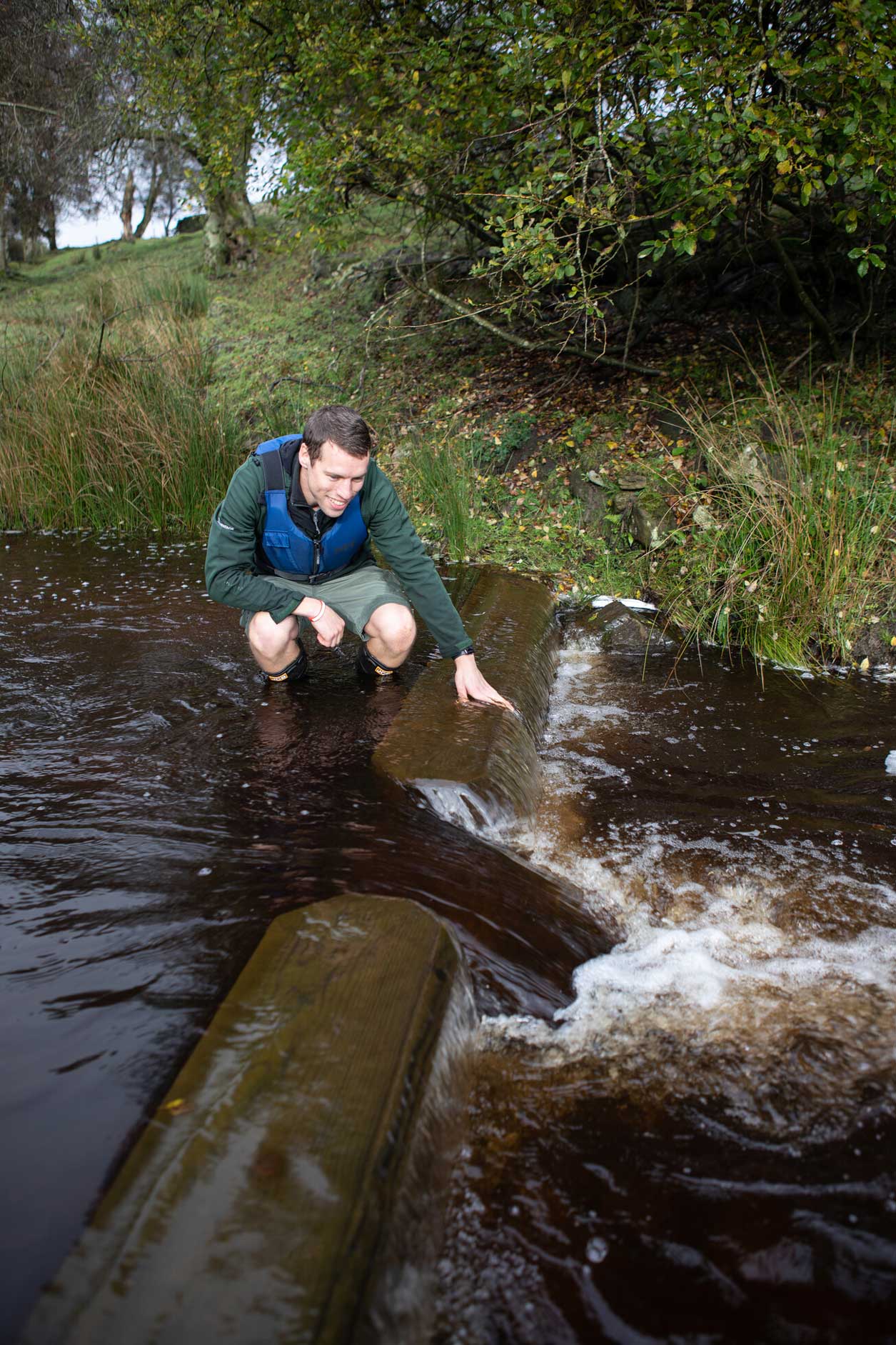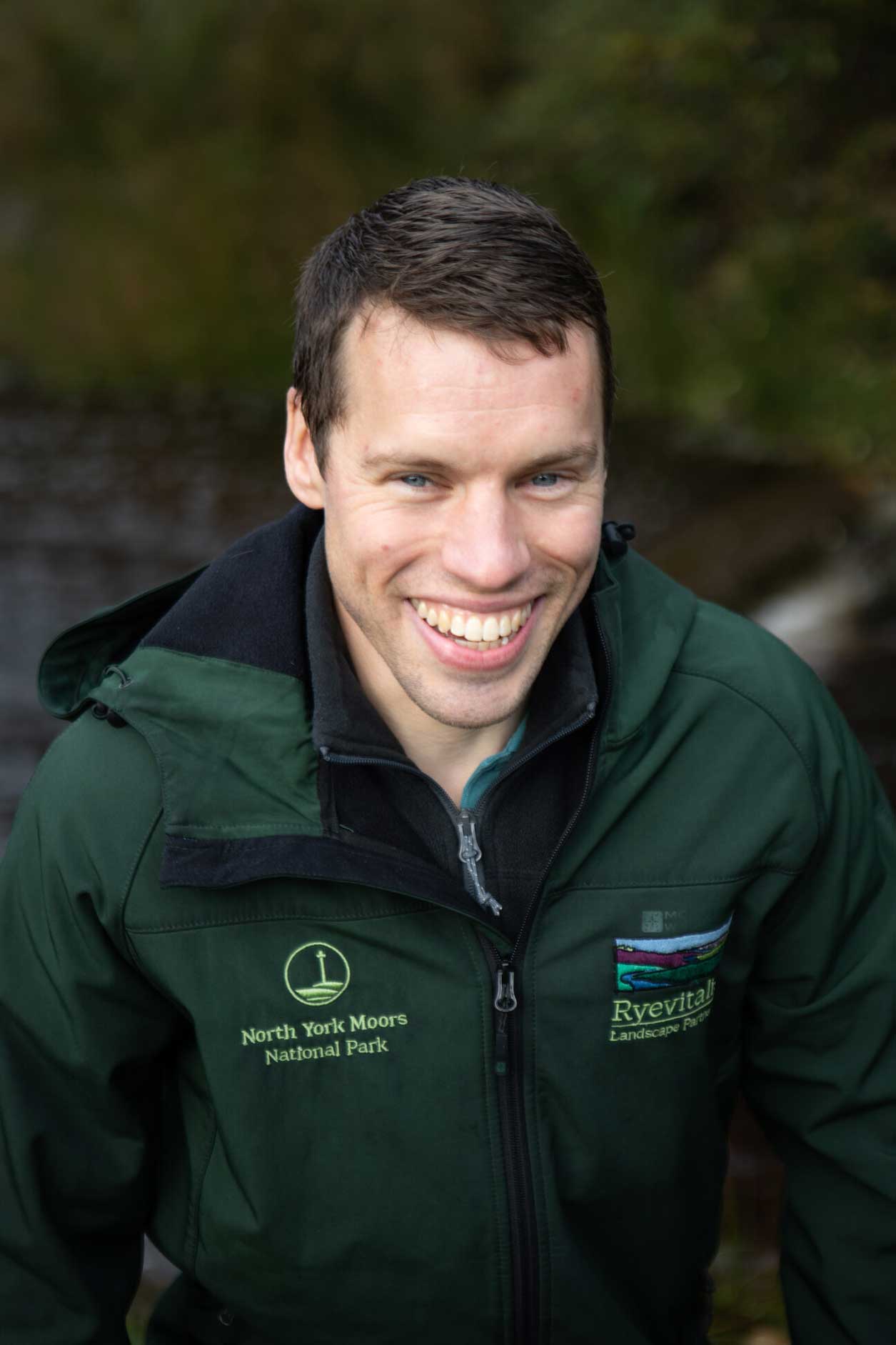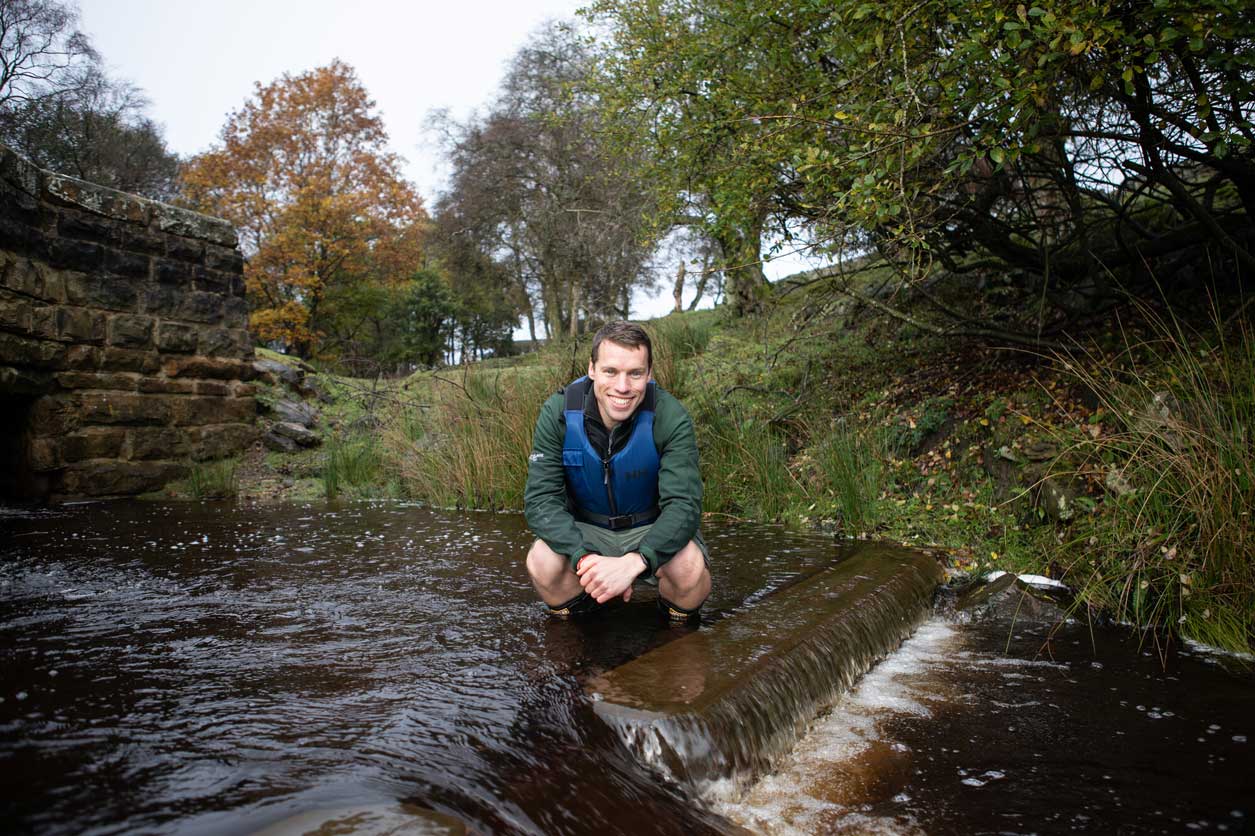A package of works has been undertaken by the Ryevitalise team creating a more natural river at Bonfield Gill - notably the installation of two wooden pre-weirs (pictured) to aid fish migration.


Through our Blue Corridors project, we have previously addressed physical structures in the watercourse (such as culverts), but this isn’t always possible, particularly where historic features are encountered.
Working within the catchment to address obstacles downstream, the latest work at Bonfield Gill Bridge will help improve the migration of spawning fish, such as brown trout, through a road culvert.
The installation of two wooden pre-weirs immediately downstream of the bridge raised the water level, creating pools and small steps in the channel that fish are able to jump. The resulting three small steps makes each jump easier compared to the previous single large step fish encountered.

The timber weirs are secured in place with rocks and bedded into the banks to ensure their stability. The majority of the timber is buried to help retain water and create the required pools, this results in a minimal visual impact and is in keeping within the existing river channel. The installation of these pre-weirs was undertaken in late summer to avoid the fish spawning season and when flows were lower to facilitate the works.
Survey work recording juvenile fish populations was undertaken before any obstacles within the catchment were addressed, continuation of this monitoring work will provide a record of how fish populations and species are using the water course.
Management Plan
This projects supports the following management plan objectives:
Outcome 1: A resilient landscape at the forefront of addressing climate change and nature recovery.
Objective 5: Achieve good ecological status for all water bodies by 2027 and support the improvement of the marine and coastal habitat.
![]()
Outcome 2: A nature rich, more biodiverse landscape
Objective 6: Create bigger, better and more joined-up habitats, with nature-rich wildlife corridors extending beyond the National Park boundaries.
